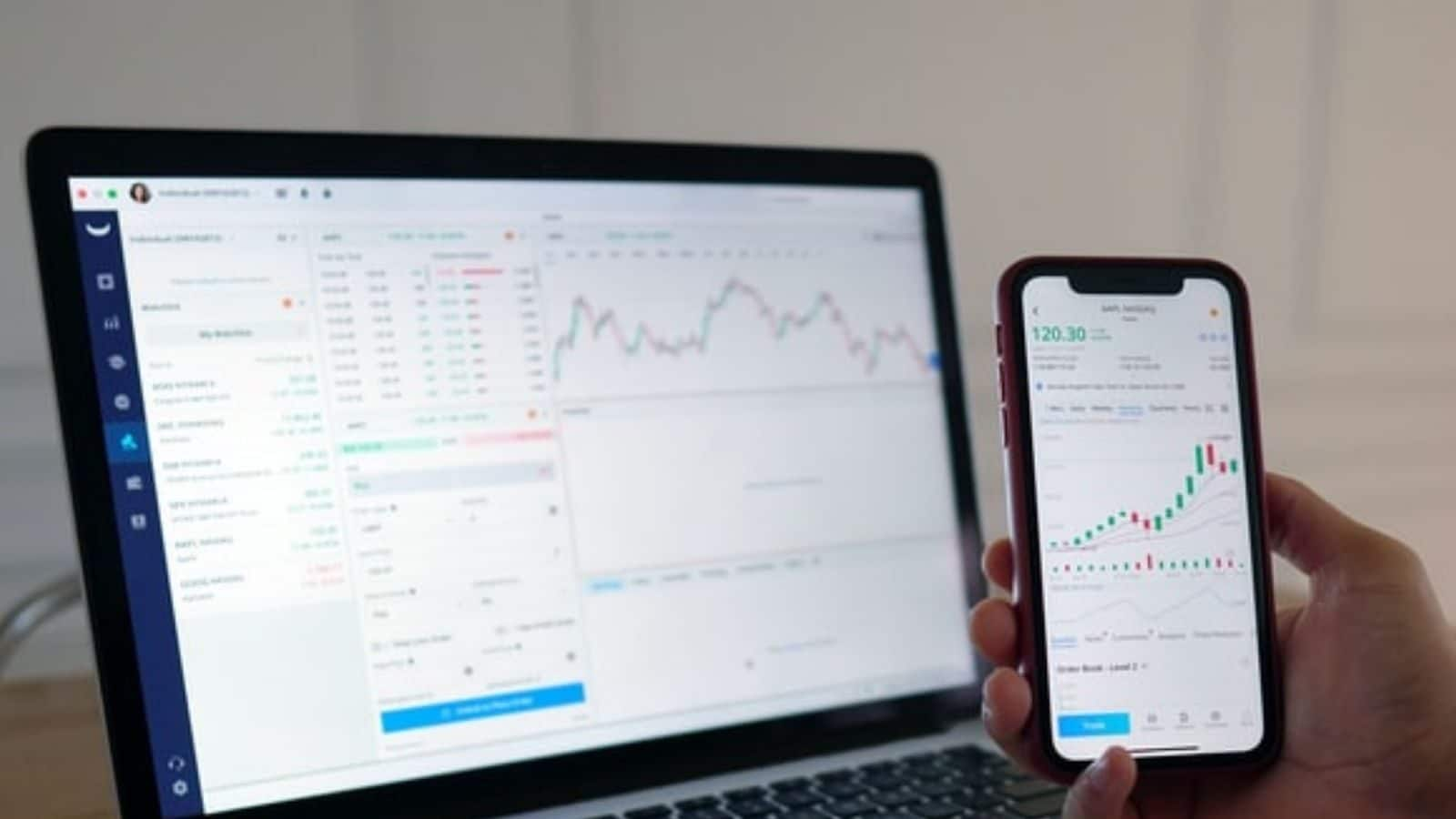How listed shares are used to convert black money into white, 2 popular ways

How listed shares are used to convert black money into white, 2 popular ways
It’s hardly surprising that in a nation like India, where the shadow economy amounts to 25% of GDP (total unaccounted money in India is believed to be between Rs. 10 – 15 lakh crore by various estimations), novel means for utilizing black money in the actual economy are continually being developed. They are not just changing, but they are prospering. Innovative concepts continue to encourage tax evaders, nearly to the point of becoming a full-fledged industry.
Any amount of money might be invested in the stock market in terms of business. However, from a legal and compliance standpoint, you – “the investor” – will be responsible for explaining the source of the funds and paying taxes on them.
The shares of a business named Global Securities, listed on the Bombay Stock Exchange (BSE), where trading in a range of Rs 15-25 per share in April of 2013. Daily volumes ranged from a few hundred to a few lakh shares during the month. In 2012-13, the firm had a net profit of roughly Rs 3.9 lakh.
The stock’s price climbed slowly but consistently between April 2012 and March 2013. It reached a high of Rs 151 per share in early March 2013 before plummeting. Volumes in the stock averaged a few hundred to a few thousand per day between late May and December.
Volumes climbed to as high as a few lakh shares in January before plummeting after April 1. Global Securities and two other BSE-listed firms, Finalysis Credit and Guarantee and Aricent Infra, are the focus of a recent BSE complaint alleging that their shares were traded in such a way that brokers may convert client money from black to white.
E.T. Magazine contacted each company and requested a response. “Yes, we are aware of concerns,” stated Finalysis managing director Sajjad A Qadir. We’re looking into it, and the authorities are also looking at it.”
“We have not yet received notice of any such complaint by the BSE authorities, nor have we received any such complaint at our end,” Aricent infra’s compliance officer stated. We will investigate the situation on our end.” Follow-up emails to Global Securities’ official email addresses and phone calls to authorities received no response.
“The exchange frequently receives various letters/complaints on various scrips… whenever justified [it] performs the requisite analysis/ inquiry,” BSE said in a questionnaire. The correspondence does not mention the status of particular cases under inquiry.”

Regulators may well discover that trading in these firms’ equities is legal and that they are not being used to launder money by operators. However, allegations regarding stock manipulation, many of which are ‘penny’ stocks, to facilitate the conversion of black money into white money are not new. The following is how shares in publicly traded firms are converted:
The dreaded “Black List.”
While there are numerous methods for doing so, the underlying premise is that long-term capital gains on listed equity shares (capital gains that occur when a share is purchased and sold over at least a year) are tax-free in India.
A broker and his customer may agree to a deal where the broker sells his client shares in a penny stock for a low price, such as a few rupees. The hitch is that the contract letter sent to the customer is backdated to the previous year.
In the meantime, the broker has manipulated the company’s price by using circular trading, which involves two or more brokers selling the shares at a greater price than before.
After purchasing the shares for a few rupees apiece, the client gives physical cash to the broker, subsequently distributing it across other accounts.
The broker then ‘buys’ the shares back from his customer at a higher price, ensuring a long-term capital gain. Essentially, the broker has returned the customer’s funds to him, with the added benefit that the client may claim this as a tax-free capital gain on his tax return.
However, these tried-and-true procedures are problematic since I.T. authorities and other investigative agencies are well-versed in them. After all, an income tax officer doesn’t have to question an ‘investor’ why he’s purchasing into a firm that appears to conduct no business and whose prospects appear to be dubious.
“I-T officers are fully aware of this approach and will undoubtedly ask inquiries,” says a chartered accountant E.T. Magazine met while pretending to be a potential customer for such services.’ According to the C.A., he and a few other accountants controlled several publicly traded firms.

Backdating a contract note comes with its own set of dangers, especially since Demat transaction statements and information of share transactions with the exchange by the broker in issue are likely to expose the real dates on which the shares were traded.
Alternatives
However, demonstrate that such transactions were made as part of a scheme to launder money. “Investigating a lawfully constructed lengthy capital gain is rather an arduous effort for an assessing officer,” author Prashant Kumar Thakur, an I-T officer, writes in Tax Evasion via Shares. The problem comes when tax evaders make it look genuine by completing all legal procedures.”
Indeed, because of physical proofs such as purchase bills and contract notes, courts have not always decided against the buyers of such shares, even when brokers are eager to make assertions that benefit tax authorities.
In the case of Baijnath Agarwal vs. Asst CIT, the income tax appeal tribunal (ITAT) said, “The government has received statements of these brokers which are utilized against the assessee.” “…when the assessee produces a mountain of documentary evidence, the burden of proof shifts to the Revenue [department].”
The statements [of brokers] are never able to assist the department. How could the proofs as mentioned earlier be overlooked? The Revenue [department] must provide justifications for its denials. These are significant papers; some are required under the Companies Act.”
As the ITAT pointed out, the issue is that the ‘apparent is real’ based on the proof provided by the assessee. In other words, a series of transactions backed up by their paperwork must be recognized as legitimate unless I-T authorities can establish otherwise. But, wanting to be safe, many operators have gone even farther, and it’s not obvious that any illegality can be shown in the case of particular sorts of transactions.
A better approach to undertake a money-laundering operation, according to the CA ET Magazine talked with, is through a preferential issue of shares. Such offerings allow a company’s promoter to sell shares to a select group of investors rather than the general public.
Under preferential issue rules, those shares not granted to the promoter group are locked in for a year. “We will acquire those shares from you after one year when they are liberated from lock-in,” the C.A. stated. “This is a very safe technique of converting monies,” he stated, adding that everything is legal.
A preferential allocation issues shares at a cheap rate under the modus operandi. The money is given to the operator, who also owns the business. The CA was pleased to give names and contact information for angadias who might help with physical cash transfers. “As far as I’m concerned, the top angadias have the same repute as any top-rung bank,” he remarked.
When the lock-in period expires after a year, the shares are repurchased at a suitable high price. The CA also requests a greater commission charge than usual due to its “safety.” The commission charge for backdating contract notes was 3-3.5 percent, but the commission rate for performing a preferential issuance was 6 percent.
Completely Legal
E.T. Magazine met with an I.T. officer who agreed that it’s tough to challenge the legality of some transactions. “There are several loopholes in current tax legislation that allow for such transactions,” he explained.
Mergers are one such strategy. A private, unlisted firm sells shares to many investors at a low price – these are the same people who want to launder their money. This private firm is subsequently merged into a public corporation, and the investors receive shares in the public company due to the merger.
The price of the listed corporation is then increased, allowing investors to cash out and register genuine financial gains.
“In such cases,” another C.A. told E.T. Magazine, “the initial share issuance in the private business can be looked at.” Officers should evaluate whether the money obtained from the issue was truly used for the issue’s publicly declared purposes or goals (e.g., capital investment in a project). The bank statements will reveal the genuine picture.”
The Income-Tax Department pushed for regulations like the General Anti-Avoidance Rule, or GAAR, in response to such tactics. In order to combat unexplained money, tax enforcement agents and investigative organizations will have their job cut out for them.
How exactly is black money used to invest in shares?

Before I go into detail about how black money is channeled through the financial system, let me tell you that it is possible to invest in a channeled and proper manner with some careful preparation and tax planning. Many investors avoid paying taxes and legalizing their undeclared money for many reasons, including fear of the tax authorities and misunderstanding the tax system.
There are two common routes for dark money to be invested in publicly traded corporations.
[I] Trading in a third party account
An intermediary (usually a stockbroker or another authorized person) establishes an account in the investor’s name in the name of a third party. Usually a corporation or for smaller accounts – in the name of someone who earns less than the taxable limit. The investor’s money is subsequently used to finance this account.
This account allows the investor to trade via call and trade and online banking and trading. It’s essentially the same as granting the investor access to another person’s trading/bank account, which is entirely financed by the investor’s funds.
When an investor decides to withdraw his funds, he directs the intermediary, who receives a tiny commission to facilitate the process. In many circumstances, the middlemen manage the money, which may be defined as a “dark portfolio management service” at best. It’s rife.
[II] Converting black money into white – Incorporating the so-called ‘capital gains company.’
I’m not sure if this is just simple stupidity on our law enforcement authorities or if this is the best story ever told, but it can’t go unnoticed for much longer. The technique uses the tax-free status of long-term capital gains on stock purchases (gains on shares held for more than a year).
To illustrate the mechanism, consider the following scenario:
Pool A: many investors pool their unexplained funds;
Pool B: at the same time, a group of investors with white (tax-free) money gathers (or, more accurately, is organized by an intermediary);
The first set of investors to acquire stocks when the firm is listed is those looking to turn black money into white. They don’t get their money from pool A. A tiny percentage of their white money is used to purchase shares at the first public offering price (say Rs. 10 for each share).
Once investors in Pool A have taken positions (i.e., purchased shares at the listing price), investors in Pool B begin to buy, inflating the stock price.
They get the unexplained money from Pool A at the same time. While they buy using Pool A cash in practice, they suffer a loss in their books, and their (tax-paid) white money vanishes in accounts. They are effectively buying with their white money to raise the price of a publicly-traded company in exchange for black money. They are paid a few percentage points of premium to do so.
For example, if they convert their white money at Rs. 1 crore into black money for Rs. 1.05 crore, they would earn black money worth Rs. 1.05 crore.
After a year from Pool A investors’ first purchase (to secure the benefit of tax-free long-term capital gain), Pool A investors begin selling their holdings as the stock price rises. In contrast, Pool B investors suffer large losses (only on the screen). They received the Pool A money in exchange, which is larger than the screen loss.
After a while, all of Pool A’s investors cash out, and the stock price plummets.
The Demat scam is being used to convert black money.
According to market sources, market intermediaries leverage the stock market to convert black money into white money by employing Benami businesses as fronts.
A large number of Demat accounts and a network of investors willing to lend their Demat accounts are required for the operation.
A person who wishes to convert part of his spare cash usually seeks these brokers, who provide the service for a fee. The broker uses a network of Benami Demat accounts to make the required preparations for the customer to participate in the IPO. Profits from the initial public offering (IPO) can be collected as white income after paying a 10% short-term capital gains (STCG) tax.

This method has previously been employed to boost penny stock values. Market tamperers are now taking advantage of the strong primary market. Approximately Rs 22,000 crore has been raised from the market in calendar 2005 through 45 issues, a combination of initial public offerings (IPOs) and follow-on public offers (FPOs).
This is how it works: An investor with a high-risk appetite and some spare cash (say, Rs 2 crore) visits a broker specializing in such transactions. The broker charges a fixed fee of 5% (Rs 10 lakh) for the end-to-end service he delivers.
He submits an IPO application on behalf of the investor through his network of Benami accounts, considering elements such as the likelihood of oversubscription in specific categories and the rationale for allotment.
Most of the time, the allocation meets expectations, and the whole number of granted shares is sold within days of the listing. Because the secondary market is also booming these days, most IPOs have recently been listed at a significant premium to the issue price.
The System’s Operation
• Broker-operators maintain a network of Benami Demat accounts and provide the service to people looking to invest idle assets in the IPO market.
• Charge a fixed charge on the amount invested, and then put the network to work by applying for fresh issues.
• Once the allotments arrive, the investors swiftly disinvest once the stock is listed, paying a 10% short-term capital gains tax (STCG) and walking away when the stock turns black to white.
Taking advantage of this buoyancy, authorized shares in IPOs are sold within a short time after they are listed, triggering a 10% short-term capital gains (STCG) tax.
Even after paying the STCG, the investor still makes a substantial return, with the benefit of turning idle cash into white income.
The method is anticipated to be revealed as a consequence of a deeper inquiry conducted by market regulator Securities and Exchange Board of India (Sebi) due to the newly discovered Demat fraud.
In fact, Sebi stated, “There is a risk that Benamis and front firms may wind up functioning as conduits for laundering of ill-gotten monies.” According to market analysts, this type of domestic participatory notes method in which an investor who does not want to be named engages.
So, if you notice unusual firms performing exceptionally well despite no change in fundamentals, or companies that consistently hit higher (or lower) circuits, you’re probably looking at a manipulated stock.
Such companies are not only defective of fundamental merit, but they are also illegal. Do not buy shares because they have shown unbelievable outperformance; you will be stuck in them when they hit lower circuits.




